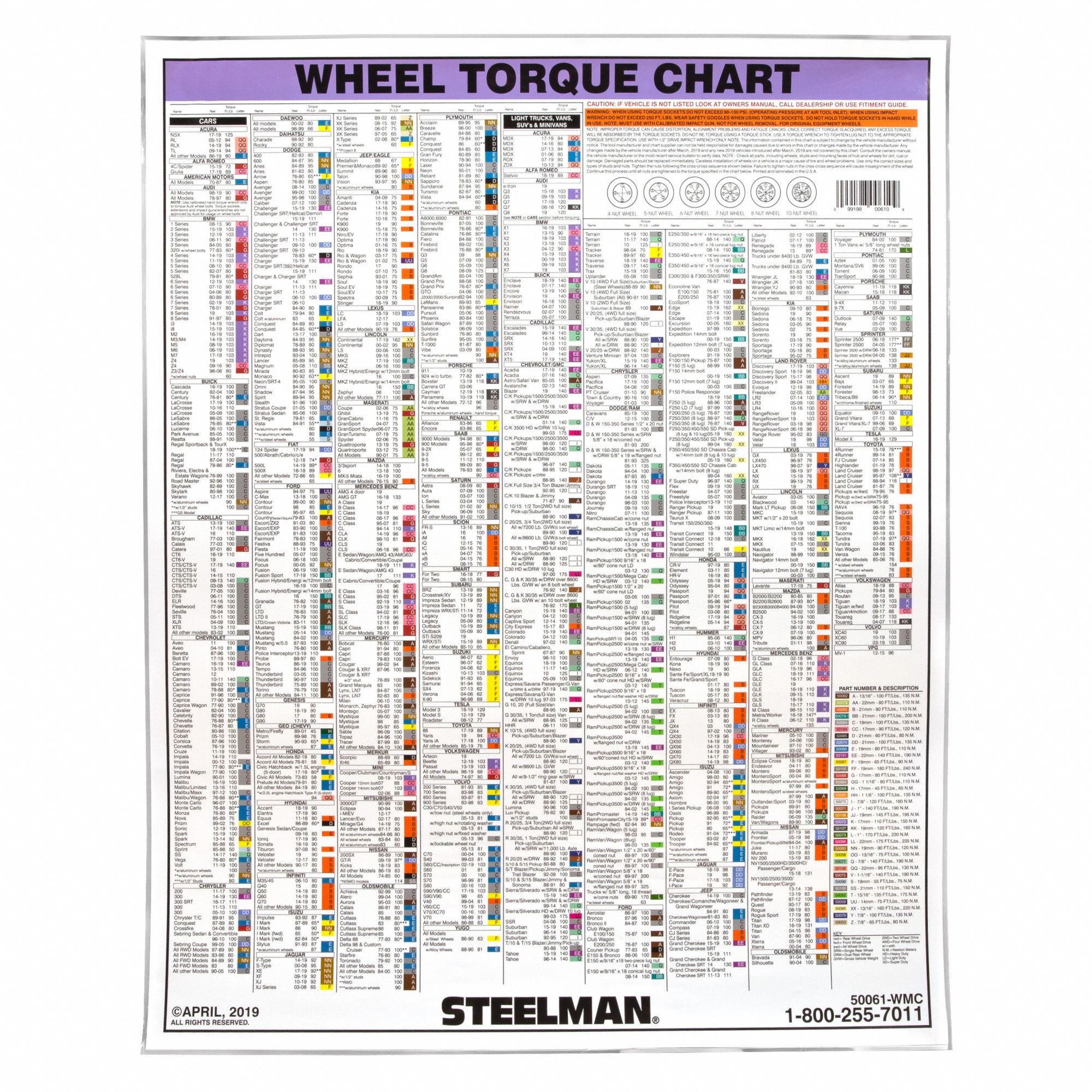Wheel Lug Nut Torque: Your Guide to Safe & Secure Wheels
Ever experienced that unsettling wobble in your steering wheel? Or perhaps a disconcerting vibration as you cruise down the highway? While there could be several culprits behind these driving woes, one often-overlooked factor is incorrect wheel lug nut torque. Proper lug nut tightening is paramount for road safety, preventing wheel detachment, and ensuring a smooth, worry-free ride.
Wheel lug nut torque, simply put, refers to the amount of rotational force applied to a lug nut when tightening it. This seemingly minor detail plays a crucial role in securing your wheels to the vehicle's hub. Over-tightening or under-tightening can have serious consequences, from stripped threads and damaged wheel studs to, in worst-case scenarios, wheel detachment and accidents.
The concept of securing wheels with fasteners has existed as long as wheeled vehicles themselves. Early methods involved rudimentary bolts and pins, evolving over time into the standardized lug nut and stud systems we see today. As vehicles became faster and more complex, the importance of precise tightening became increasingly apparent. The development of torque wrenches allowed for accurate and consistent application of the correct force, minimizing the risks associated with improper tightening.
Correct wheel lug nut torque is essential for several reasons. It ensures even pressure distribution across all lug nuts, preventing warping of the brake rotor or drum. This uniform tightening also helps maintain proper wheel alignment, contributing to optimal tire wear and fuel efficiency. Most importantly, it guarantees that your wheels remain securely attached to your vehicle, preventing them from coming loose while driving.
One of the most common issues related to wheel lug nut torque is inconsistent tightening. Using a standard wrench can lead to some nuts being over-tightened while others remain loose. This uneven distribution of force can create stress points, leading to potential failure. Another frequent problem is over-tightening, often caused by using excessive force or air impact wrenches without proper torque control. This can strip the threads on the wheel studs, making it difficult or impossible to remove the wheel in the future. Conversely, under-tightening can allow the wheel to loosen gradually, eventually leading to detachment.
Torque is measured in units of force multiplied by distance, commonly expressed as pound-feet (lb-ft) or Newton-meters (Nm). For example, a torque specification of 100 lb-ft means 100 pounds of force applied to a lever one foot long. Every vehicle has a specific wheel lug nut torque specification provided by the manufacturer. This information can typically be found in the owner's manual or on a sticker located inside the driver's side doorjamb.
One benefit is safety: Proper torque ensures wheels stay attached. Another benefit is preventing damage: Correct torque avoids stripped threads and warped rotors. Improved handling: Evenly torqued lug nuts contribute to proper wheel alignment.
Action plan: Obtain the correct torque specification for your vehicle. Acquire a calibrated torque wrench. Follow the star pattern tightening sequence.
Checklist: Locate your vehicle's torque spec. Check your torque wrench calibration. Tighten lug nuts in a star pattern. Re-torque after 50 miles.
Step-by-step: Consult your owner’s manual for torque specs. Use a calibrated torque wrench. Tighten lug nuts in a star or criss-cross pattern to the specified torque. Re-torque after driving a short distance.
Advantages and Disadvantages of Proper Wheel Lug Nut Torque
| Advantages | Disadvantages |
|---|---|
| Increased Safety | Requires a Torque Wrench |
| Prevents Damage | Time Consuming |
| Improved Handling |
Best Practices: 1. Use a calibrated torque wrench. 2. Follow the star pattern. 3. Re-torque after a short distance. 4. Consult your owner’s manual. 5. Don’t overtighten.
FAQs: What is wheel lug nut torque? Why is it important? How do I find my car's torque spec? What is a torque wrench? What is the star pattern? What happens if I overtighten? What happens if I under-tighten? How often should I check my lug nuts?
Tips and Tricks: Mark your torque wrench with your vehicle's spec. Check your lug nuts regularly, especially after tire rotations or changes. Keep your torque wrench calibrated.
In conclusion, maintaining correct wheel lug nut torque is a simple yet critical aspect of vehicle maintenance. From ensuring a smooth and safe ride to preventing costly repairs and potential accidents, understanding and applying the principles of proper lug nut tightening empowers every driver to take control of their vehicle’s safety and performance. Investing in a torque wrench and taking the time to properly tighten your lug nuts is a small price to pay for the peace of mind it provides. Don’t underestimate the importance of this seemingly small detail – it could be the difference between a safe journey and a roadside emergency. By understanding and following these guidelines, you can ensure a safer and more enjoyable driving experience. Check your owner's manual for your vehicle's specific torque specifications and make it a habit to incorporate lug nut tightening into your regular maintenance routine.
The enchanting allure of the mop fly a trout fishermans secret weapon
Ace your south carolina permit test study guide and practice resources
Keep your mercury 250 pro xs purring the ultimate oil filter guide













